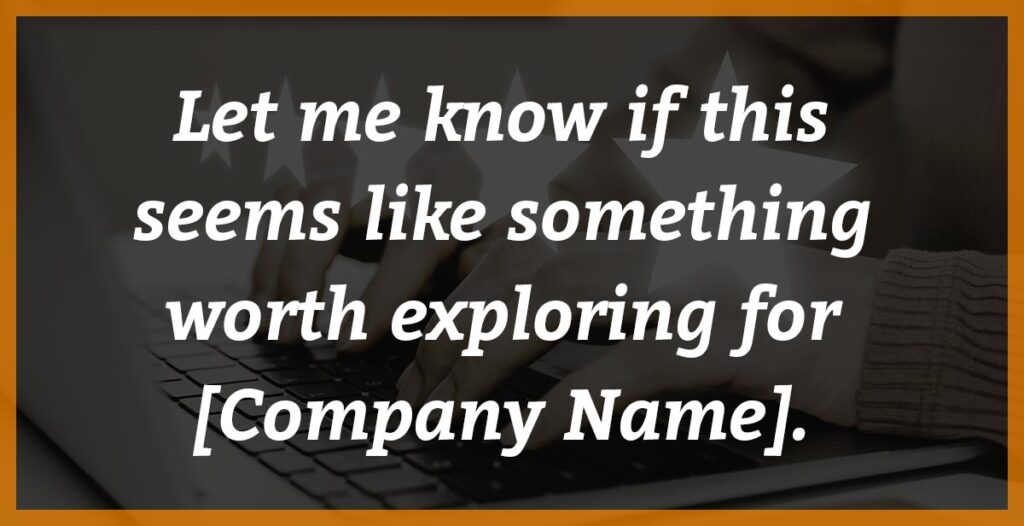
Any B2B outbound marketing campaign must include email as a key component. According to a Databox report, cold email is the most successful strategy for outreach (36 %), followed by cold calling (only 18 %). While the average open rate of emails is very high (21.3%), other industries have a response rate of only 1%. Consider this: out of a hundred emails sent, only twenty-one will be viewed by the receivers. Only four or five of the twenty-one will receive a response.
So, what could entice individuals to respond to your emails more frequently? Is it a well-described product, a joke in the email’s opening phrase, or a hilarious GIF attached? In general, all of these features are vital in creating a decent cold email template, but the success of an email is determined by how many people actually perform the desired action, or as it’s known in sales call to action, (CTA).
Must Read: The do’s and don’ts of email marketing
What Constitutes A Powerful Call To Action?
Table of Contents
Some businesses assume that by including a green button with large terms like Subscribe, Buy Now, Read More, or Get a Discount, they’ve done everything they can and their CTA email is ready to go. In actuality, these phrases have lost their impact on users. We’ve become indifferent to numerous things that worked perfectly well 10 years ago after receiving 121 business emails per day. Nowadays, our brain filters out all the irrelevant data and focuses just on the text’s primary message.
Fortunately, CTAs haven’t lost their enchantment. A well-written email with a well-crafted CTA line at the conclusion can persuade your potential customer to take a certain action.
Let’s look at some of the top call-to-action methods and examples for cold email outreach to see how to achieve it.
Best Practices For Call To Action For A Cold Email
After years of experience in outbound lead generation and more than 1M emails sent, our specialists have put together five significant things (and a bonus tip) every salesperson should know when writing an email CTA.
Find Out Whether The Topic You’re Emailing About Has Any Interest.
When writing a call to action for your cold email template, keep in mind that your offer must entice and should be relevant to your clients. “The only method on earth to influence other people is to talk about what they want and teach them how to obtain it,” according to Dale Carnegie in his renowned book How to Win Friends and Influence People.
With cold emails, it’s not much different. Your CTA must pique your prospect’s interest (or not) and encourage them to explore it. And if you do, they will notify you by doing the requested action.
Finally, why would you want your salespeople to waste time qualifying a lead that isn’t even interested in your product? The likelihood of converting such a lead is quite slim. Even if they do, there’s a good chance that none of you will benefit from this partnership. And in B2B, having only mutually beneficial arrangements is in your best interests.
In this scenario, a decent email call-to-action can be:

2.Be Inquisitive.
Nothing is more unappealing than a chilly email template that is impersonal and has a dull CTA on a large green button at the bottom. If you want to get someone’s attention, you have to be truly interested in what they need. You are more likely to receive reciprocal attention if you show interest in your possibility.
Asking questions is the most effective approach to demonstrate your interest. These don’t have to be tied to business in any way. Inquiring about their hometown’s weather, for example, may be a fantastic ice-breaker before boarding the CTA.
Must Read: The 6 Important Metrics To Measure Your Email Marketing Campaign
3. Only Use One Call To Action.
You should determine what action you want your prospects to do before creating a CTA in a cold email. Do you want them to sign up for your newsletter? Do you want to buy something? Or how about reading the most recent blog post? Determine what you want them to accomplish and include it in your CTA.
But keep in mind that you can’t have it all. You just need to respond to one call to action. The math is straightforward: zero CTA = no actions; one CTA equals one action; two or more CTA equals zero actions once again.
This does not preclude you from including many CTA links and buttons in a single cold email. You can, but only if they’re all for the same thing. Don’t make your prospects confused by asking them to complete many things in a single email. Less is more when it comes to cold email CTAs.
4. Before Sending Anything, Get Permission.
Given that phishing emails account for 91% of all cyber assaults, it’s no wonder that your prospects dislike clicking on links or downloading files from someone they don’t know. As a result, the primary goal of your first cold email should not be to sell a product but to build a strong, trusting connection with the prospect. This desire should be reflected in your CTA. Consider your prospect’s safety; it’s just the right thing to do.
A simple line like this is a wonderful email call-to-action example when asking for permission.

5.Do Not Always Request A Thirty-Minute Call.
Your prospect’s time is the most precious resource he or she can provide. And, certainly, the goal of most cold emails is to set up a meeting and sign a contract. Would you ask a complete stranger for half an hour of their life to pitch them something they would not even be interested in if it wasn’t about sales?
A far better strategy is to pose a broad question that necessitates arranging a meeting, such as:

When would be the best time for us to talk about [Client Issue]?
When will we be able to expand on the [Client Issue] topic?
Another option to incorporate a CTA for scheduling an appointment in a cold email template is to:

Over the course of a brief call, it would be easy to discuss how your organization may execute a new outreach plan. Is Tuesday, June 21 at 10 a.m. CST a good time for you?
Of course, check your prospect’s schedule and, if feasible, find an open spot. If you don’t have one, provide a link to your calendar instead.\
Bonus Tip: Make Sure The Rest Of Your Email Reinforces Your Call To Action.
A good cold email template with a CTA must follow a certain structure, which includes a tailored conversation opener, a useful offer, and a trigger to accept the offer. The email will not operate if you extract some piece from this structure.
But the essential thing here is to create your emails with purpose in mind, so that by the time the prospect comes to the CTA, they’ve already decided they need to participate. To make it happen, they only need to click the link, hit the button, respond to the email, and so on.
Make Your Calls To Action (CTAs) Work!
Expect your CTA to handle the majority of the work and close the transaction on its own. Instead, your email text should do it. A CTA, on the other hand, is just another reminder to a prospect to take a certain action.
A successful call-to-action email necessitates extensive research and background work on your prospects. Get in contact with our experts to learn more about your clientele and how to design the right CTA for them.
Must Read: Email Marketing And Content Marketing – The Perfect Brew

Vikas Bhatt is the Co-Founder of ONLY B2B, a premium B2B lead generation company that specializes in helping businesses achieve their growth objectives through targeted marketing & sales campaigns. With 10+ years of experience in the industry, Vikas has a deep understanding of the challenges faced by businesses today and has developed a unique approach to lead generation that has helped clients across a range of industries around the globe. As a thought leader in the B2B marketing community, ONLY B2B specializes in demand generation, content syndication, database services and more.


